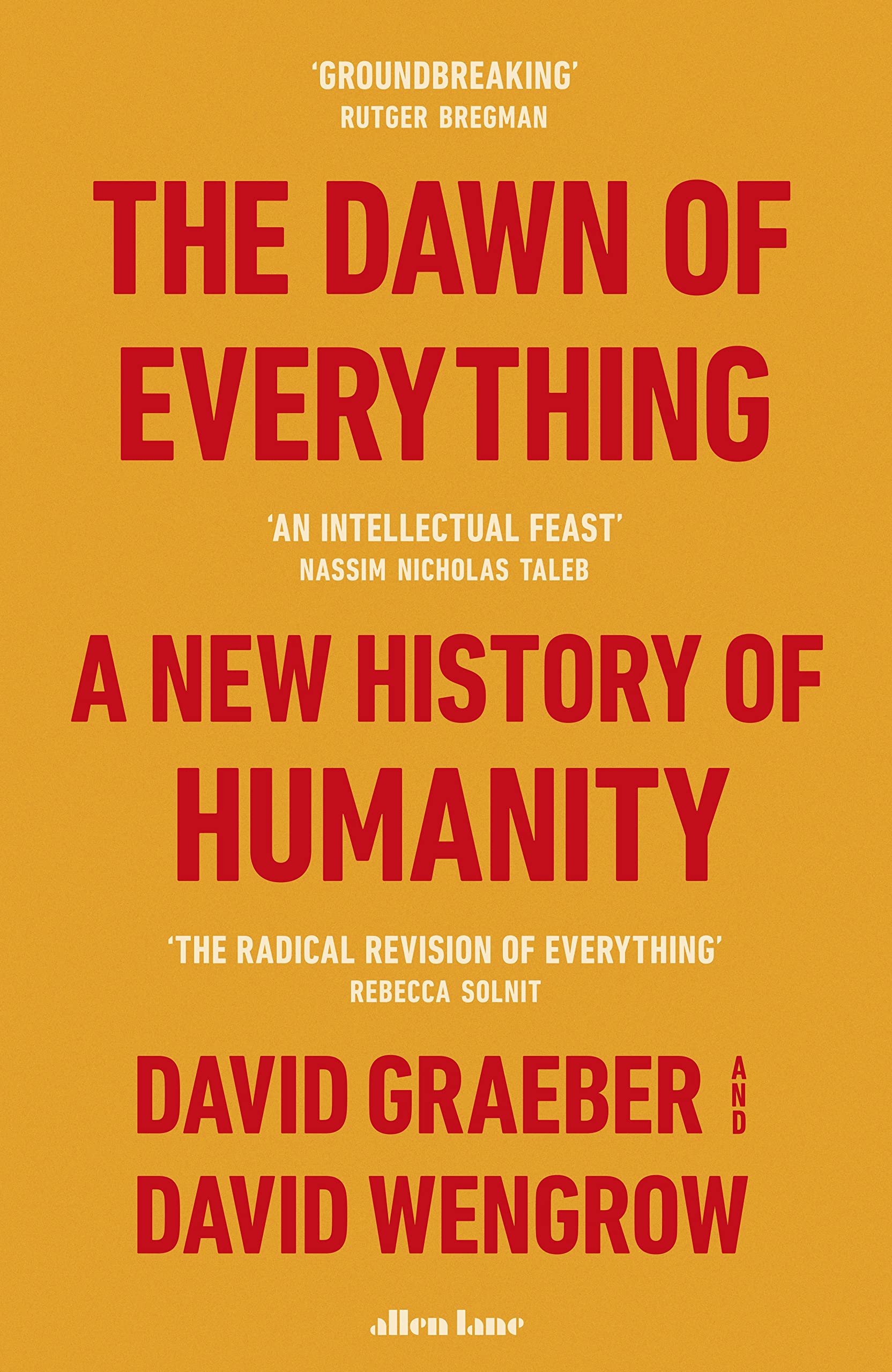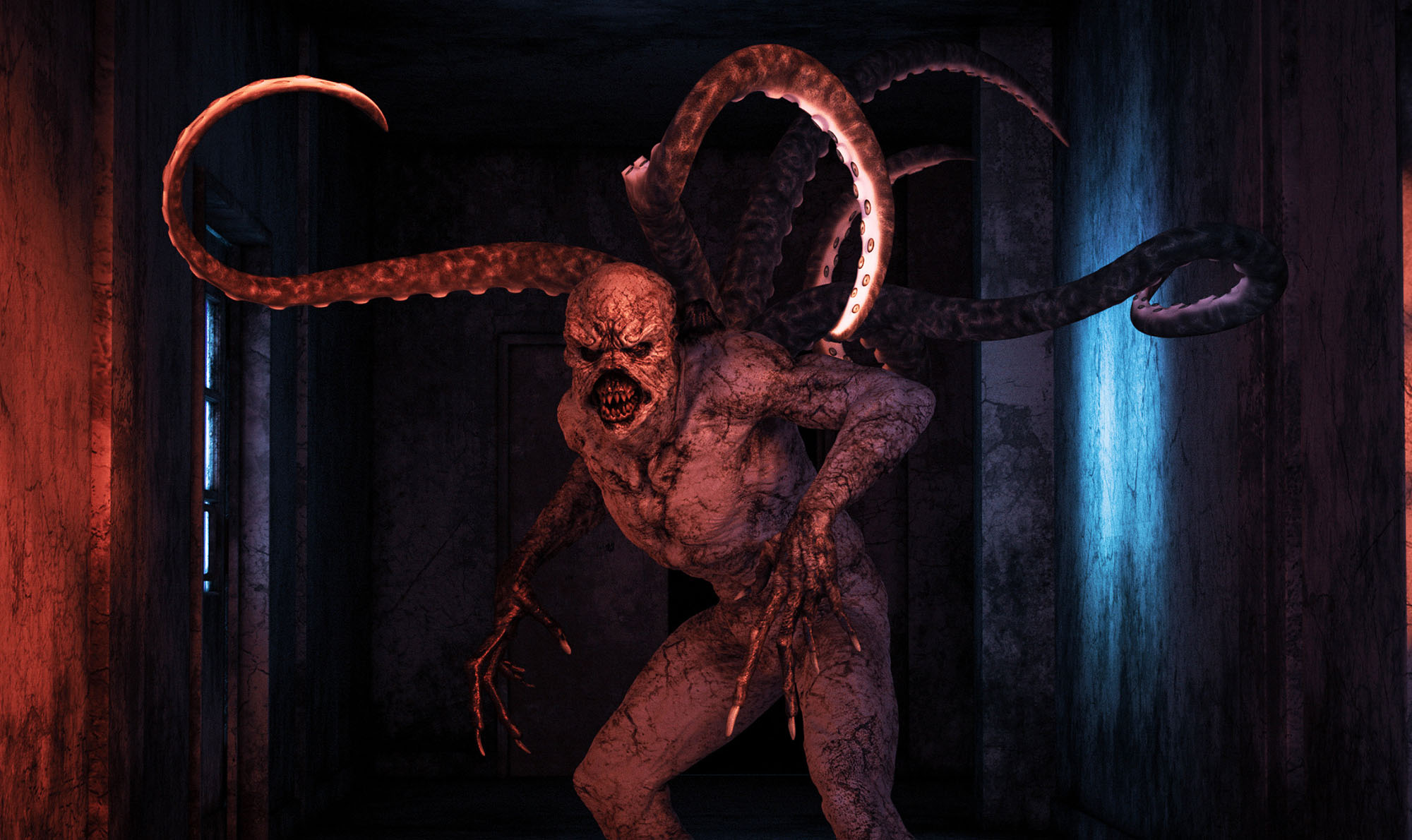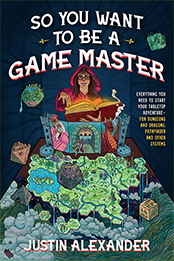We’ve previously discussed how religion in D&D has long defaulted to “modern Christianity, but with a pagan god slotted in for Jesus.” This is, of course, because the religious experience of most people playing the game and writing for the game is limited to Christianity (with a smattering of Greek or Norse mythology).
What may be slightly less obvious is that basically the same thing is true for D&D nation-states.
“Wait a minute,” you say. “D&D has queens and dukes and stuff! That’s not modern!”
Sure. But much like you’ve got cruciform churches filled with priests and bishops worshipping Zeus or Crom, so, too, are the kings and duchesses of D&D often just a patina of medievalism draped across a nation-state which is fundamentally structured according to a modern, post-Treaty of Westphalia understanding of what a nation looks like and how it operates.
Here are a few things you might recognize in “medieval” D&D kingdoms:
- standing armies being large and common;
- a “city watch” that looks just like a modern police force;
- “feudalism” in which literally everyone is a free citizen;
- neatly drawn borders that precisely account for every scrap of land.
Now, to be clear, you can look back at history and find a variety of antecedents for each of these things. And D&D, of course, is not literally medieval Europe (with plenty of reasons why it logically shouldn’t be). So there’s nothing inherently “wrong” with this synthesis that not-so-coincidentally looks just like the modern polities you’re familiar with, and you could justify it in any number of ways.
But what IS true is that this synthesis is incredibly limiting, particularly if you’re just subconsciously defaulting into it as a straitjacket because it’s the only way you know the world to work.
DRAW FROM HISTORY
Obviously the first thing you can do here is broaden your palette. You won’t be trapped in the structure of the modern nation-state if you learn about a lot of alternatives. Here’s a completely arbitrary list I’ve personally found useful:
- Roman Hegemony. Republic, Imperial, or Byzantine. Going with all three will also give you the benefit of seeing how structures of political power can shift over time.
- Renaissance Italy. In many ways, of course, this is just an extension of Roman government along a different branch. But looking in detail at the myriad ways in which the Italian city-states experimented with government form and function (including the Vatican) is a great way to really understand how mutable government can be, even within societies which are otherwise broadly similar (in terms of culture and technology).
- Feudal Japan. Also known as the shogunate. For me, personally, this was the historical deep-dive that taught me a lot about feudalism by looking at how a different-but-similar system worked. (But you need to find a source that won’t just draw direct, vapid parallels with European feudalism, which can be a common trap here.)
- Incan Empire. And, if you’re willing to dig a little deeper, the pre-Incan civilizations that initiated the use of khipu (knotted cords) for the recording of debts and transactions. Spanish colonizers crushed this civilization, but it’s a fascinating window into a very different way or organizing and thinking about society.
- Ancient Greece. Somewhat similar to Renaissance Italy, in that its city-states provide a bunch of directly juxtaposed examples. While you’re mucking about in this era, you might also want to take a peek at the Persian Empire as another alternative to the Roman-style of hegemony.
For this to be effective, though, you’ll need to really dig deep into the actual political structures of these societies. Probably deeper than many general histories will provide. (Although something like a Cambridge History will probably get the job done.) And there’s no clever shortcut here: You just have to do the research.
FANTASTICAL STATES
The other limitation here, of course, is that this historical sampling — whatever form it takes for you — will only be looking at governments and nations as they exist in the real world. There’s nothing wrong with copy-pasting from history, but it can certainly be a lot of fun to embrace the fantastical nature of a setting and invent societies that have never and perhaps could never exist in the real world.
Some questions to think about:
- What happens when your political leaders can live for centuries or even millennia?
- If the gods can literally speak to you (or even walk among you), what effect does that have on temporal political institutions?
- What does “monster power” look like? In other words, what effect does it have for a dragon or lich to rule a nation? Perhaps even more interesting would be to ask what it looks like for multiple dragons or liches to do so.
- How does the underground nature of a dwarven nation affect their understanding of political power?
- On a similar note, in the real world the territory of a nation has been assumed to be not only the surface of the land, but everything beneath it. How do the many layers of the Underdark affect the perception of the nation-state and the application of political power? What are the conflicts that result when there are different opinions about this?
- What affect do magic and/or fantastical technologies have on the organization and application of power in a nation-state? For example, could readily available teleportation lend itself to a proliferation of non-contiguous states?
And so forth. Once you really start digging in here, you can find all kinds of marvelous ideas that will makes your setting utterly unique and special.
THREE FORMS OF DOMINATION
When playing around with ideas like this, it can be useful to have some sort of theory or framework that can organize your thoughts and maybe give you some dials and levers you can experiment with. For this purpose, let me quote at length from David Graeber and David Wengrow’s The Dawn of Everything: A New History of Humanity:
Does that mean that property, like political power, ultimately derives (as Chairman Mao so delicately put it) “from the barrel of a gun” — or, at best, from the ability to command the loyalties of those trained to use them.
No. Or not exactly.
To illustrate why not, and continue our thought experiment, let’s take a different sort of property. Consider a diamond necklace. If Kim Kardashian walks down the street in Paris wearing a diamond necklace worth millions of dollars, she is not only showing off her wealth, she is also flaunting her power over violence, since everyone assumes she would not be able to do so without the existence (…) of an armed security detail.
But let us imagine, for a moment, what would happen if everyone on earth were suddenly to become physically invulnerable. (…) Could Kim Kardashian still maintain exclusive rights over her jewellery?
Well, perhaps not if she showed it off regularly, since someone would presumably snatch it; but she certainly could if she normally kept it hidden in a safe, the combination of which she alone knew and only revealed to trusted audiences at events which were not announced in advance. So there is a second way of ensuring that one has access to rights others do not have: the control of information. (…)
Let us take this experiment one step further and imagine everyone on earth drank another potion which rendered them all incapable of keeping a secret, but still unable to harm one another physically as well. Access to information, as well as force, has now been equalized. Can Kim still keep her diamonds? Possibly. But only if she manages to convince absolutely everyone that, being Kim Kardashian, she is such a unique and extraordinary human being that she actually deserves to have things no one else can.
We would like to suggest that these three principles — call them control of violence, control of information, and individual charisma – are also the three possible bases of social power. The threat of violence tends to be the most dependable, which is why it has become the basis for uniform systems of law everywhere; charisma tends to be the most ephemeral. Usually, all three coexist to some degree. Even in societies where interpersonal violence is rare, one may well find hierarchies based on knowledge. It doesn’t even particularly matter what the knowledge is about: maybe some sort of technical know-how (say, of smelting copper, or using herbal medicines); or maybe something we consider total mumbo jumbo (the names of the twenty-seven hells and thirty-nine heavens).
(…)
In terms of the specific theory we’ve been developing here (…) the three elementary forms of domination — control of violence, control of knowledge, and charismatic power — can each crystallize into its own institutional form (sovereignty, administration, and heroic politics). Almost all these “early states” could be more accurately described as “second-order” regimes of domination. First-order regimes like the Olmec, Chavin, or Natchez each developed only one part of the triad. But in the typically far more violent arrangements of second-order regimes, two of the three principles of domination were brought together in some spectacular, unprecedented way. Which two it was seems to have varied from case to case. Egypt’s early rulers combined sovereignty and administration; Mesopotamian kings mixed administration and heroic politics; Classic Maya ajaws fused heroic politics with sovereignty.
We should emphasize that it’s not as if any of these principles, in their elementary forms, were entirely absent in any one case: in fact, what seems to have happened is that two of them crystallized into institutional forms — fusing in such a way as to reinforce one another as the basis of government — while the third form of domination was largely pushed out of the realm of human affairs altogether and displaced on to the non-human cosmos (as with divine sovereignty in Early Dynastic Mesopotamia, or the cosmic bureaucracy of the Classic Maya).
And, in case it’s not clear, the thesis here is that the modern nation-state generally finds a way to institutionalize all three forms of domination.
(I do recommend grabbing a copy of The Dawn of Everything and reading the whole thing. It’s an excellent book.)
What’s particularly useful here are the three pillars:
- Violence / Sovereignty
- Information / Administration
- Charisma / Heroic Politics
To create a new nation, all you need to do is broadly explain how it asserts control over one or more of these pillars. With the broad outline established, you can then drill down into the details at your leisure. This makes it very easy to craft bespoke societies. Fantastical societies, of course, simply flow from the expedient of making one or more institution based on the magical elements of your world:
- The vampire princess who monopolizes violence through her slavish spawn. (What are the formal ranks of the spawn and how are they determined?)
- The magocracy whose bureaucracy is built around the nine arcane colleges. (Over which spheres of temporal life do each college wield control?)
- The wyrmling warlords who feud and compete for the loyalty of dragonborn clans. (By what feats is the greatness of the wyrmlings judged?)
The possibilities, of course, are limitless, and even moreso as you begin combining pillars in different combinations.
The really great thing? You can use these three pillars as a cheat code for creating novel societies even if you’re only passingly familiar with historical nation-states. All that research we talked about? It will still be invaluable if you do it. (Knowing more stuff never hurt anyone when they set out to create new stuff.) But the three pillars of domination are a functional shortcut for worldbuilding.
One final thing to note is that describing a first-order society is not to say that the other elements are completely absent from society: Charismatic military leaders are likely common in a sovereign state of military clans. Heroic wyrm-kings will have scribes. What we’re looking at, however, is when those forms of power become institutions.
A BRIEF DIGRESSION ON HEROIC POLITICS
Of the three pillars of domination, the first-order societies which seems to be most alien to modern Westerners (i.e., almost everyone reading this), is heroic politics. So let’s take a moment to clarify what those look like.
Useful touchstones here might be Beowulf and the Iliad. These are “primitive” societies which crystallize around charismatic leaders who prove their “worth” through deeds – venturing forth on profitable raids, hunting mighty beasts, boasting and drinking, engaging in formal duels, competing in games, offering sacrifices, etc. (This sort of thing seems particularly relevant to pulp adventure games like D&D, where this is just the sort of thing PCs are frequently doing.)
The “selection process” by which these leaders are chosen can range from the informal (e.g., Robin Hood drawing merry men into Sherwood) to the extremely formal (e.g., democratic elections carried out in accordance with a formal constitution). Similarly, the traits which are seen as “desirable” will vary by society and circumstance.
THE INTERACTION OF SOCIETIES
Your world will likely see a mixture of first-, second-, and third-order societies. For example, there might be a hub of well-established civilization filled with third-order societies (institutionalizing violence, administration,  and charisma), but as you journey out into the frontiers you’re likely to see less formal first- and second-order societies.
and charisma), but as you journey out into the frontiers you’re likely to see less formal first- and second-order societies.
Historically speaking, you may also see a third order society (e.g., the Roman Empire) collapse or contract, leaving first- and second-order societies in its wake (e.g., King Arthur emerging through heroic politics as Roman sovereignty in the British Isles breaks down).
These first- and second-order societies may be referred to as “barbarians” by the writers of “civilization,” but they’re probably doing the same thing to other third-order societies, too. Your tribe is always doing things in the best way possible; the other person’s is a bunch of superstitious, unenlightened bumpkins. (The reality, of course, is more complicated than that.
In fact, “incomplete” first- or second-order societies are often balanced by another society in the region based on another of the three pillars. To quote, again, from Dawn of Everything:
Throughout much of history, grain states [second-order sovereign administration states] and barbarians [clan-kings; i.e. first-order heroic politics] remained “dark twins,” locked together in an unresolvable tension, since neither could break out of their ecological niches. When the states had the upper hand, slaves and mercenaries flowed in one direction; when the barbarians were dominant, tribute flowed to appease the most dangerous warlord; or, alternatively, some overlord would manage to organize an effective coalition, sweep in on the cities and either lay waste to them, or more typically, attempt to rule them and inevitably find himself and his retinue absorbed as a new governing class. As the Mongolian adage went, “One can conquer on horseback; to rule one must dismount.”
Often these choices of society are deliberate — simultaneously an embrace of your own way of life and a rejection of the other way of life. (“Lowlanders are all soft! When the shadows return, they will be plucked just like the ripe fruit of their orchards!”)
In addition to regional proximity, these societal forms can also oscillate through time. For example, when sovereignty would break down in Ancient Egypt, the political organization would swing towards the heroic politics of local warlords who would continue overseeing the complex administration of society.
These kind of frontier societies and/or periods of societal breakdown are, of course, the perfect environment for the points-of-light/pulp adventure of a typical D&D campaign.
















